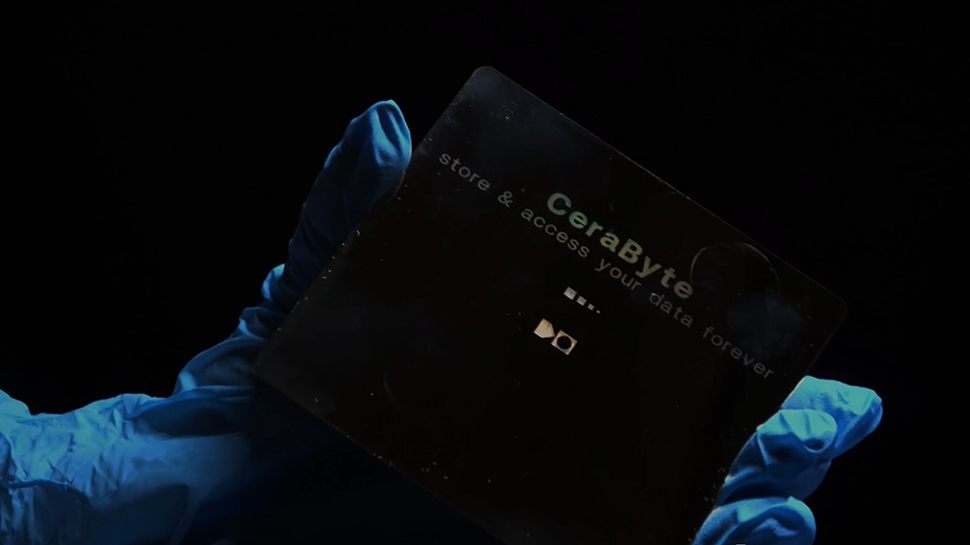This is what a ceramic cartridge with a 10,000TB capacity looks like – system that can store data for 5000+ years edges closer to commercialization as working archival data rack gets readied for 2024 launch
In today’s digital age, businesses and individuals are generating and accumulating more data than ever before. However, the cost and relatively short-term lifespan of existing storage methods present significant concerns. Enter Cerabyte, a startup offering a low-cost, highly resilient solution with virtually unlimited lifespan – ceramic nanolayers.
Cerabyte likens its data storage method to the ancient Egyptians’ practice of chiseling hieroglyphs into rock and although there is still quite some way to go before the technology is widely available, the company has already transformed its initial proof of concept into a fully operational terabyte end-to-end demo system, using only commercial off-the-shelf components.
Cerabyte’s demo system comprises one read rack and several library racks. The storage media takes the form of a thin, single accessible square glass sheet (referred to as a platter or carrier) with a nanoscale dark ceramic layer stored in cartridges within a robotic library.
How it works
When it comes to writing data, the cartridge is moved from a library rack to the write/read rack. The cartridge is opened, and the platter is removed and positioned on a stage. Data is inscribed in QR code-like patterns onto it using a femtosecond laser pulse.
The laser pulse creates holes or leaves spaces in the ceramic layer, representing binary ones and zeros. As the stage moves forward, a line of QR patterns is written and then read and verified by a microscope camera on the backward movement. Once a data carrier is fully written, it is returned to the cartridge, and returned to the library.
The data retrieval process is similar, except just using the microscope camera to read the contents.
Cerabyte says data stored in this way remains safe and accessible within a wide temperature range of -273°C (-460°F) to 300°C (570°F) even in corrosive or acidic atmospheres, and remains impervious to radiation and electromagnetic interference.
This initial system may not compete with today’s state-of-the-art storage systems, but Cerabyte believes it has the potential to become the future standard for sustainable long-term data storage. Its cost-effective and easily scalable technology, which requires no energy to retain data and eliminates the need for data migration, is a highly promising solution for the future.

More from TechRadar Pro
- Here’s a glimpse at what the future of memory and storage could look like
- Video of ceramic storage system prototype surfaces online
- Obscure startup plans 10,000 TB cartridges with ‘cheap’ material used in restrooms
stereoguide-referencehometheater-techradar